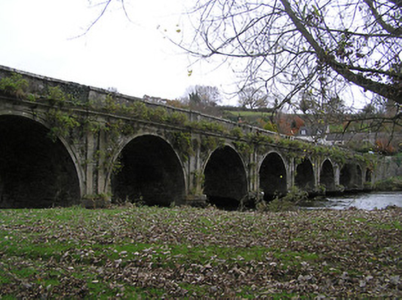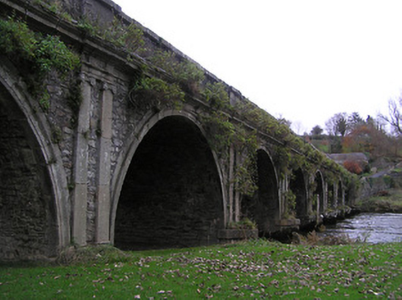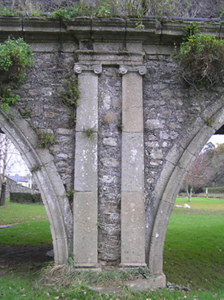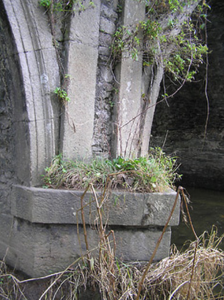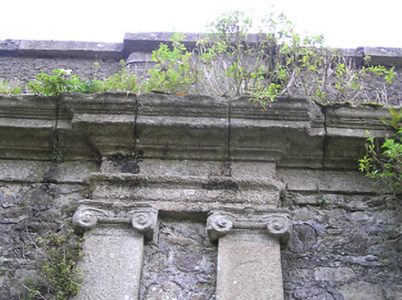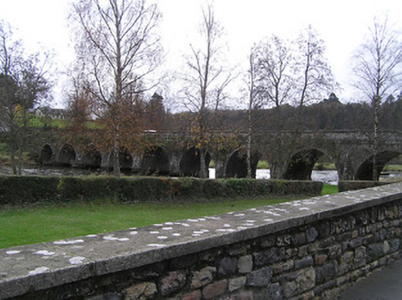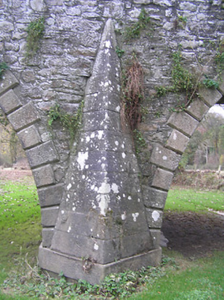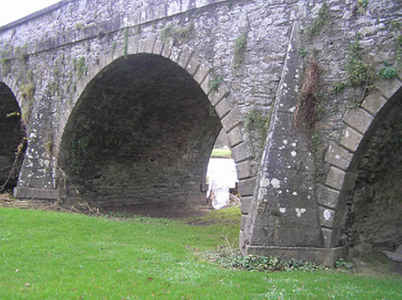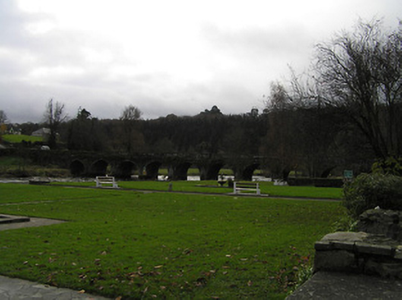Survey Data
Reg No
12323011
Rating
National
Categories of Special Interest
Architectural, Technical
Original Use
Bridge
In Use As
Bridge
Date
1760 - 1765
Coordinates
263652, 137660
Date Recorded
06/07/2004
Date Updated
--/--/--
Description
Ten-arch rubble stone Classical-style road bridge over river, built 1763, on site of earlier bridge, c.1700. Random rubble stone walls with tooled granite ashlar triangular cut-waters to piers to south having paired Ionic pilasters over supporting carved (moulded) cornice, limestone ashlar tapered (full-height) triangular cut-waters to piers to north having cut-limestone stringcourse over, and cut-limestone coping to parapets. Series of ten round arches with tooled cut-limestone quoined voussoirs, and rubble stone soffits. Sited spanning River Nore with grass banks to river.
Appraisal
An elegantly-composed substantial bridge built to designs prepared by George Smith (fl. 1763-7) superseding an earlier counterpart destroyed in the mid eighteenth century: the bridge represents one of a number of bridges in County Kilkenny rebuilt by Smith following the "Great Flood" of 1763 (see also Green's Bridge (1766) over the River Nore (12004007/KK-4766-04-07); Castlecomer Bridge (1763) on the Dinin (Deen) River (12301001/KK-05-01-01); Thomastown Bridge (post-1763 and 1792) on the River Nore (12317011/KK-28-17-11); Graiguenamanagh Bridge (1764-7) on the River Barrow (12318004/KK-29-18-04)). Each face having been approached as an individual design the Classically-derived dressings to one elevation lend a formal quality to the composition while tapering piers to the reverse elevation, again displaying high standard stone masonry, represent a further distinctive characteristic enhancing the architectural design value of the site. Rising above the Nore valley the bridge forms an imposing landmark in the townscape of Inistioge with the combination of unrefined and dressed stone in the construction producing an appealing textured visual effect in the composition.

